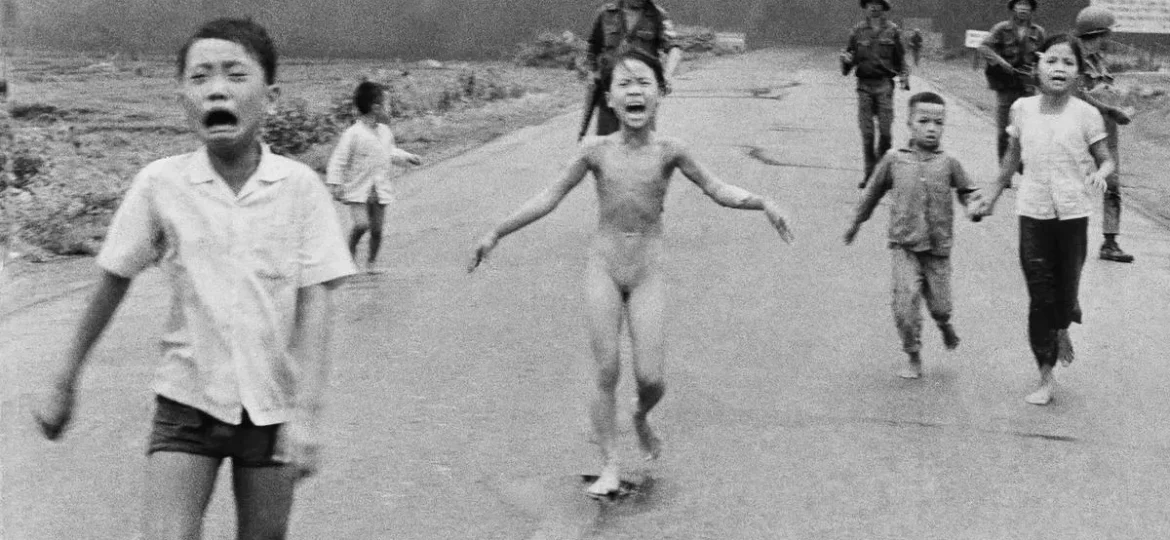
Could a picture of the Ukrainian conflict end it?
A thousand words they say.
Years ago my nephew applied to medical school. He was required to write a 1000-word essay responding to the question, “Why do you want to become a physician?” I’m sure he debated what and how much to tell the admissions committee, but in the end, he submitted a picture — a nurse helping a young patient learn to walk again.
In his mind it was worth a thousand words. Not to the admissions committee however, deciding in its wisdom that what I thought was at least clever, even brilliant, looked like slacking off to them. My opinion? They missed the point. They certainly missed out on meeting a fine, bright young man, one who thought outside the box. Don’t we need minds like that in health care?
Other photos have had a greater impact; some even stop us cold. There’s that ionic picture of the children fleeing a Vietnamese village being attacked by napalm. The children are beyond frightened; you can almost hear their screaming. A naked girl runs toward the camera at the centre of the trauma and my memory; callous soldiers walk casually behind them. Nick Ut’s photo stopped others cold, too. It may have even stopped the war.
Here’s a wish for the universe: that someone will take a picture demonstrating the brutality of the Ukrainian-Russian conflict in the same way the post-napalm picture did. That it will go viral, distributed widely on Russian social media. That it will freeze Russian support for the war. That it will stop Putin cold …
Maybe I’m wishing for too much.
On the other hand, perhaps too often, other pictures have started wars, or at least fuelled them. One of the most famous is that of the USS Maine, sunk in Havana’s harbour just before the US declared war on Spain in 1898. The picture of the sunken ship, and the slogan— “Remember the Maine, to hell with Spain! “–probably catapulted Congress into backing the conflict. It was an example of William Randolph Hearst’s yellow journalism. The Hearst publishing empire, yesterday’s Fox News.
Fast forward from the Spanish-American War to The First World War, and the art of the poorly-remembered Mary Riter Hamilton, the Canadian painter of war, a solitary, sad and unique figure, one of the very few female battleground artists from Canada or elsewhere. Her work was covered on Remembrance Day on CBC, fascinating me. WW I may have been among the first to use mustard gas, but it was not the first war to dismember its combatants. Nor the first war to devastate villages. Nor the first war to kill children, women, the elderly. Riter Hamilton’s paintings, done months after the battles, captured the horror and emptiness of the battlefield and villages, the bunkers and trenches. Her paintings, hundreds of them, remind us of the devastation of war, not the heroic pictures with flags and celebrations of a century before. She may have inspired at least a portion of whatever pacific intent lies in the heart of the average Canadian.
It’s not just photos and paintings that capture a moment. Recently, the cover of The New Yorker featured a cartoon of an elephant standing on a red surf board (red, so that we’d be sure to recognize the elephant as the classic Republican). The poor guy was stranded on the beach, a tiny bit of water pooled by the side of the board. He’d run out of wave, and was looking with perfect, comical chagrin at his predicament — embarrassed, confused, disappointed that the giant Red Wave the Republicans had predicted, fizzled out. So much for the 2022 mid-terms, his look said.
Perhaps, after all, it’s not the images that we need to celebrate. Perhaps it’s their creator, the lines they draw, the pictures they frame, the colours they capture. Worth way more than a thousand words. My opinion at least.


